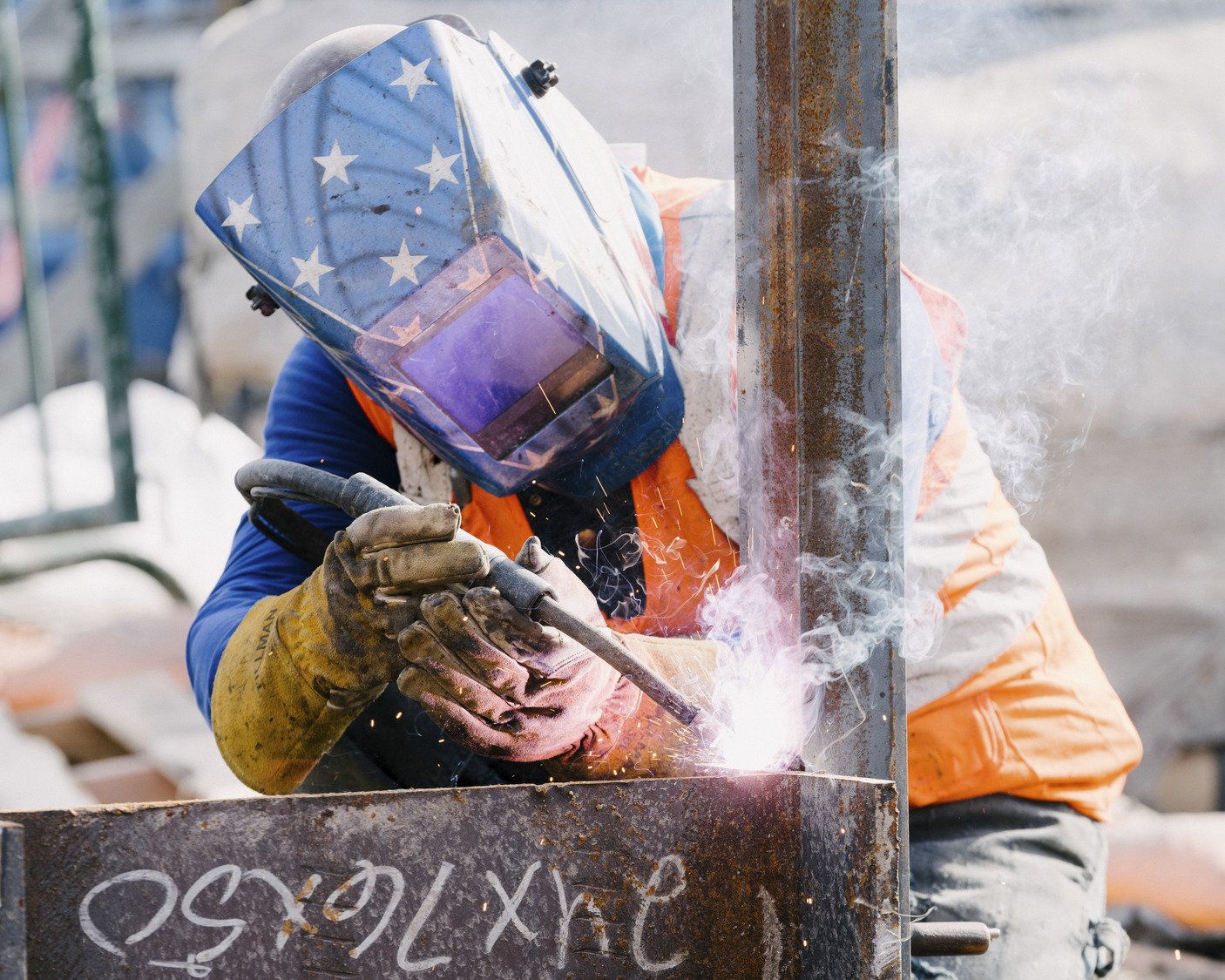Navigating the Future of Infrastructure: Insights and Strategic Directions
/In an era defined by transformative policies like the Bipartisan Infrastructure Law, also known as the Infrastructure Investment and Jobs Act (IIJA), and the Inflation Reduction Act (IRA), the landscape of infrastructure and construction stands on the cusp of a major shift.
My experiences in sustainable construction, particularly in providing strategic advice to the General Services Administration (GSA), highlight the critical role of industry expertise in navigating this new terrain.
The Promise of Low-Carbon Materials
When my committee colleagues and I provided the GSA with recommendations to address embodied energy and carbon in the fall of 2021, these insights ultimately informed what would eventually become part of the new GSA Low-Embodied Carbon (LEC) Projects program, which emerged as a beacon of progress, fueled by the visionary Inflation Reduction Act.
With an ambitious $2.15 billion investment, this initiative is pioneering a shift towards utilizing low-carbon construction materials across federal buildings. The program sets the stage for significantly reducing embodied carbon emissions by spotlighting asphalt, concrete, glass, and steel. Launched with a pilot program in May 2023, it diligently evaluates the practicality of integrating these eco-friendly alternatives into the fabric of American infrastructure.
As it transitions from pilot to widespread application, the GSA mandates stringent performance and transparency standards and ignites a chain reaction of innovation and market transformation. The anticipated outcome is a dramatic decrease in CO2 emissions, equivalent to removing thousands of vehicles from the road annually, thereby steering the nation towards a more sustainable and resilient future.
Innovative federal programs like this, introduced with the IIJA and IRA have been met with a blend of excitement and cautious optimism within the construction industry, particularly regarding low-carbon materials. These legislative acts pave the way for a significant infusion of funds into research, development, and deployment, promising to catalyze innovation and level the competitive playing field against high-carbon alternatives.
Positive Aspects:
Increased Investment and Market Growth: Both acts herald a new era of economic opportunities, with substantial allocations earmarked for low-carbon materials. The IRA, for instance, dedicates billions to clean energy infrastructure, with a sizeable chunk specifically targeting low-carbon steel, concrete, and building insulation. This influx of funding is expected to trigger a surge in research and development, bringing innovative, sustainable materials to market faster. Analysts predict the global low-carbon building materials market to reach a staggering $530 billion by 2030, creating a boom for green manufacturing and construction jobs.
Technological Advancements: The focus on low-carbon materials is expected to accelerate the development of sustainable options that are both efficient and affordable, aligning with the industry’s advocacy for innovation in sustainable construction practices. Imagine buildings constructed with bio-based concrete that sequesters carbon or self-healing asphalt that extends road life while reducing maintenance costs. Ongoing research explores promising avenues like nanotechnology-enhanced materials with superior strength and reduced environmental impact. These advancements can potentially revolutionize the industry, making sustainable construction the norm, not the exception.
Leveling the Playing Field: By making sustainable materials more competitive, these policies foster a fairer market and encourage a shift towards more environmentally responsible construction practices. The IIJA, for example, includes tax credits for using low-carbon materials in public infrastructure projects, effectively lowering their cost compared to traditional options. Additionally, “buy-clean policies” incentivize government agencies to prioritize sustainable materials in their procurement, sending a powerful message to the private sector. These combined efforts help level the playing field, making sustainable choices both environmentally sound and economically attractive, ultimately driving widespread adoption across the construction industry.
Cautious Optimism and Concerns:
However, amidst this optimism, concerns about implementation, long-term commitment, and the availability of critical materials underscore the complexities of this transition.
Implementation Hurdles: While both acts outline ambitious goals, their success hinges on effective implementation. Streamlining bureaucratic processes and establishing clear guidelines will be crucial to avoid delays and ensure efficient allocation of funds. Ensuring transparency and accountability will also be vital in building trust and maintaining public support.
Uncertain Future: Long-term commitment from future administrations is crucial for sustained progress. Fluctuations in policy or funding could stifle innovation and market growth. Establishing bipartisan support and performance-based metrics demonstrating the benefits of low-carbon materials can help secure continued investment.
Critical Material Challenges: Widespread adoption of certain low-carbon materials may require access to critical minerals with potential supply chain bottlenecks. Exploring alternatives, diversifying sources, and investing in domestic mining and processing will be essential to address these challenges and ensure the long-term viability of this transition.
These concerns are not insurmountable, but acknowledging them and proactively addressing them is crucial for successfully implementing the IRA and IIJA. Collaboration between government, industry, and research institutions will be key in navigating these challenges and ensuring a smooth transition toward a more sustainable future for the construction industry.
Opportunity Markets and States Leading the Charge
As we delve into the practical implications of the IIJA and IRA, certain states have emerged as bellwethers of the investment and job creation potential these acts offer. Georgia, South Carolina, and Texas have distinguished themselves as leading recipients of IRA-linked investments, each attracting billions in clean energy investments and announcing thousands of jobs. Let's dive deeper into the specific projects and investments driving these opportunities:
Georgia: Known for its robust clean energy sector, Georgia's significant investment influx is a testament to the state's proactive stance on sustainable development. One major project is Rivian's $5 billion electric vehicle manufacturing plant, promising 7,500 jobs upon completion. Additionally, a $4.4 billion battery plant by SK Innovation is expected to create 3,500 jobs, solidifying Georgia's position as a hub for EV production. Beyond vehicles, Atlanta is set to benefit from a $1.6 billion renewable natural gas plant, showcasing the state's multi-faceted approach to clean energy.
South Carolina: Boasting diverse opportunities, South Carolina is attracting investments across various sectors. The state is home to a $11.3 billion hydrogen hub project promising over 10,000 jobs, aiming to become a key player in the clean hydrogen market. Volvo Cars is investing $1.1 billion in an electric vehicle assembly plant, creating 3,900 jobs, and highlighting the state's appeal to major manufacturers. South Carolina's diverse landscape is further illustrated by a $3 billion solar panel manufacturing facility, demonstrating its commitment to renewable energy generation.
Texas: While historically known for its fossil fuel industry, Texas is embracing the new era of clean energy with significant IRA-linked investments. The state secured a $33 billion semiconductor facility in Sherman, projecting to create 3,000 jobs and positioning Texas as a leader in this critical technology. Additionally, a $2 billion carbon capture and storage project showcases Texas' proactive approach to mitigating emissions from existing infrastructure. Finally, a $1.5 billion wind farm development underscores the state's commitment to diversifying its energy portfolio.
These examples highlight the diverse opportunities the IRA and IIJA present. From Georgia's focus on electric vehicles and batteries to South Carolina's multi-faceted approach and Texas' embrace of new technologies, each state's unique strengths are attracting investments and fostering job creation. These leading examples provide a glimpse into the nationwide impact of these groundbreaking legislative measures, paving the way for a more sustainable and prosperous future.
It's important to note that this is not an exhaustive list; several other states are also benefitting from IRA and IIJA funding, and the White House has produced an informative and engaging web map that shows announced and awarded projects nationwide that are enabled by Bipartisan Infrastructure Law funding. Continued monitoring and analysis will be crucial to understand the full scope and impact of these investments as they unfold.
Toward a Sustainable and Resilient Future
Looking ahead, the IIJA and IRA represent more than just financial incentives; they are a call to action for the infrastructure and construction industry to embrace sustainable practices and innovative solutions. To date, the lessons learned, and strategies developed will be invaluable in shaping a sustainable, efficient, and competitive infrastructure landscape. The journey ahead will undoubtedly require timely action, continued innovation, collaboration, and leadership—qualities I am committed to bringing to the forefront of this transformative era.





